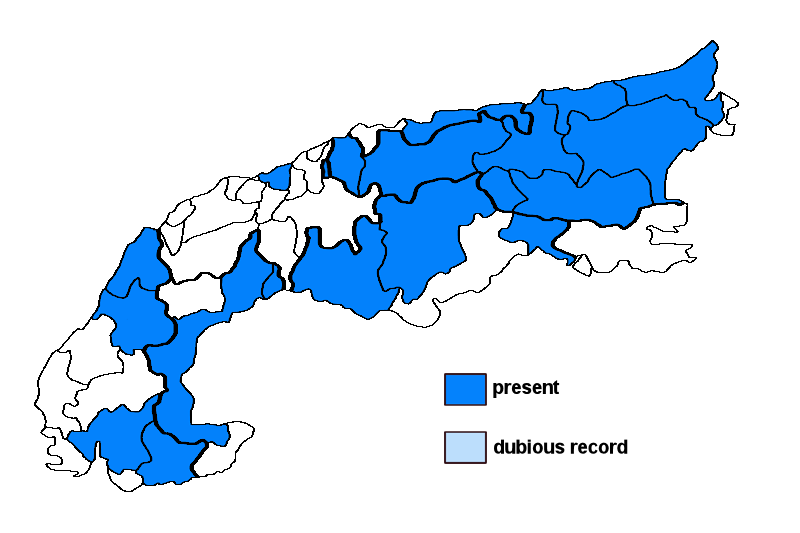Caloplaca isidiigera Vězda
Syn.: Caloplaca cerina (Hedw.) Th. Fr. var. cyanopolia (Nyl.) H. Olivier, Placodium cerinum (Hedw.) Hepp f. cyanopolium (Nyl.) A.L. Sm.
Lichenised.
Substrate: calciferous rocks, intermediate rocks (such as calciferous schists)
Altitudinal range: from the montane belt (potential vegetation: deciduous forests dominated by Fagus sylvatica and closed coniferous forests with Picea abies) to the subalpine belt (potential vegetation: open, taiga-like forests dominated by Larix decidua and/or Pinus cembra and Rhododendron)
Note: on nutrient-enriched calcareous rocks, mostly in upland areas. This species was frequently confused with C. emilii (on exposed calcareous rocks in the Mediterranean and submediterranean belts) and C. chlorina (mainly on siliceous rocks); widespread in the Alps.
Austria: Vorarlberg; Tirol; Salzburg; Kärnten; Steiermark; Oberösterreich; Niederösterreich (incl. Wien); Germany: Oberbayern; Switzerland: Schwyz; France: Alpes-de-Haute-Provence; Alpes-Maritimes; Savoie; Haute-Savoie; Italy: Friuli; Trentino Alto Adige; Lombardia; Piemonte; Liechtenstein





